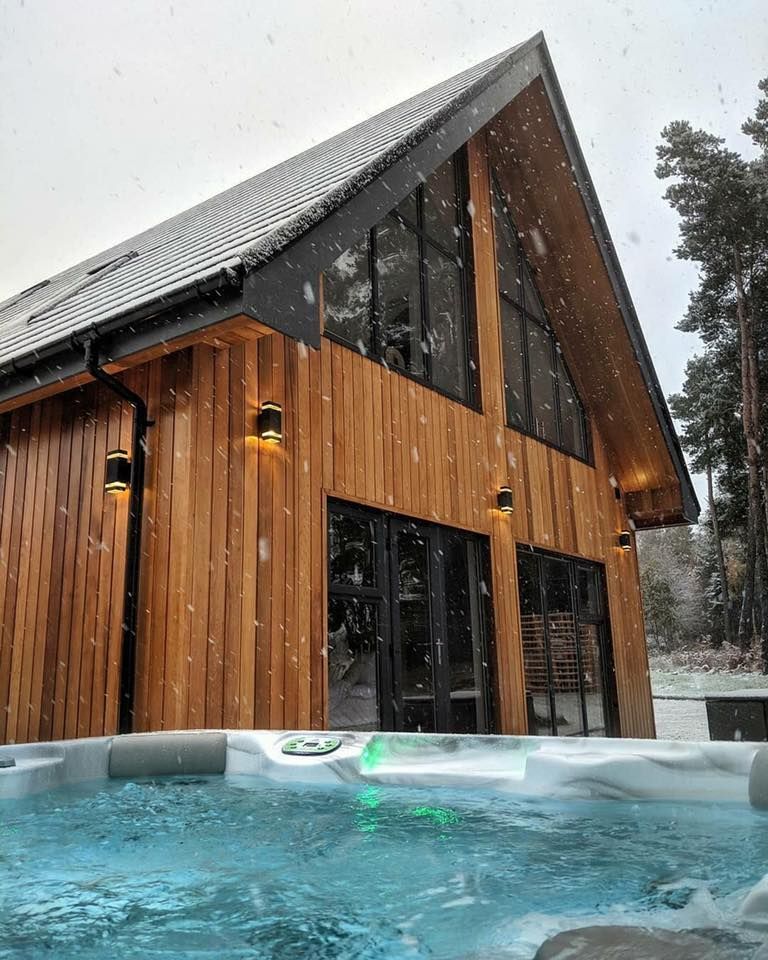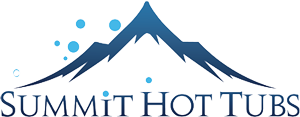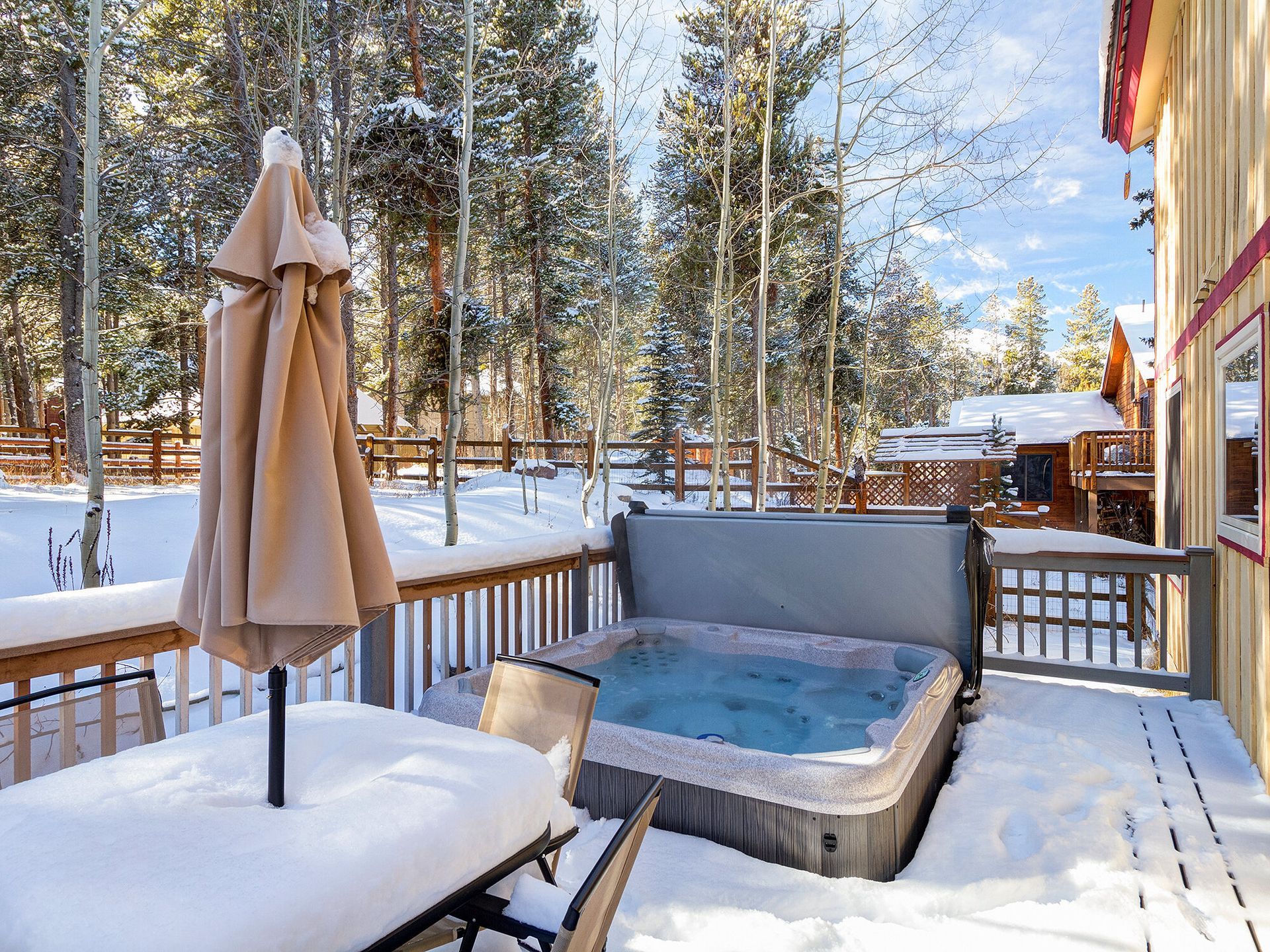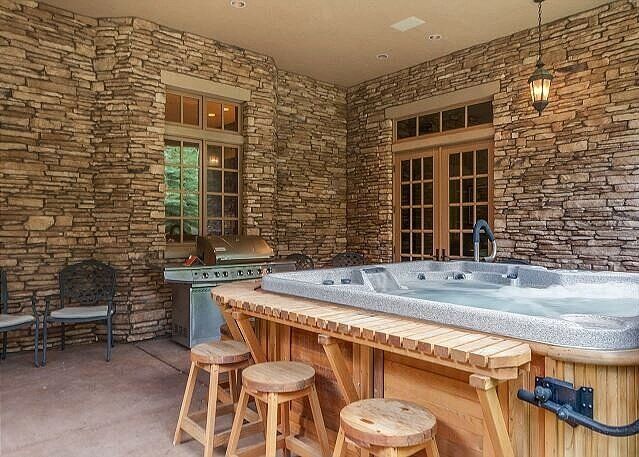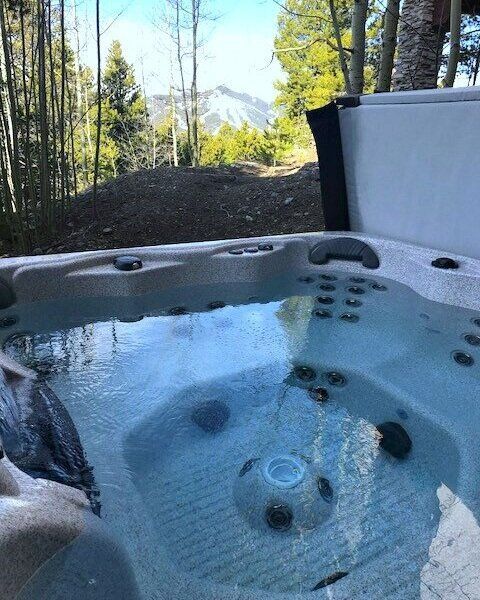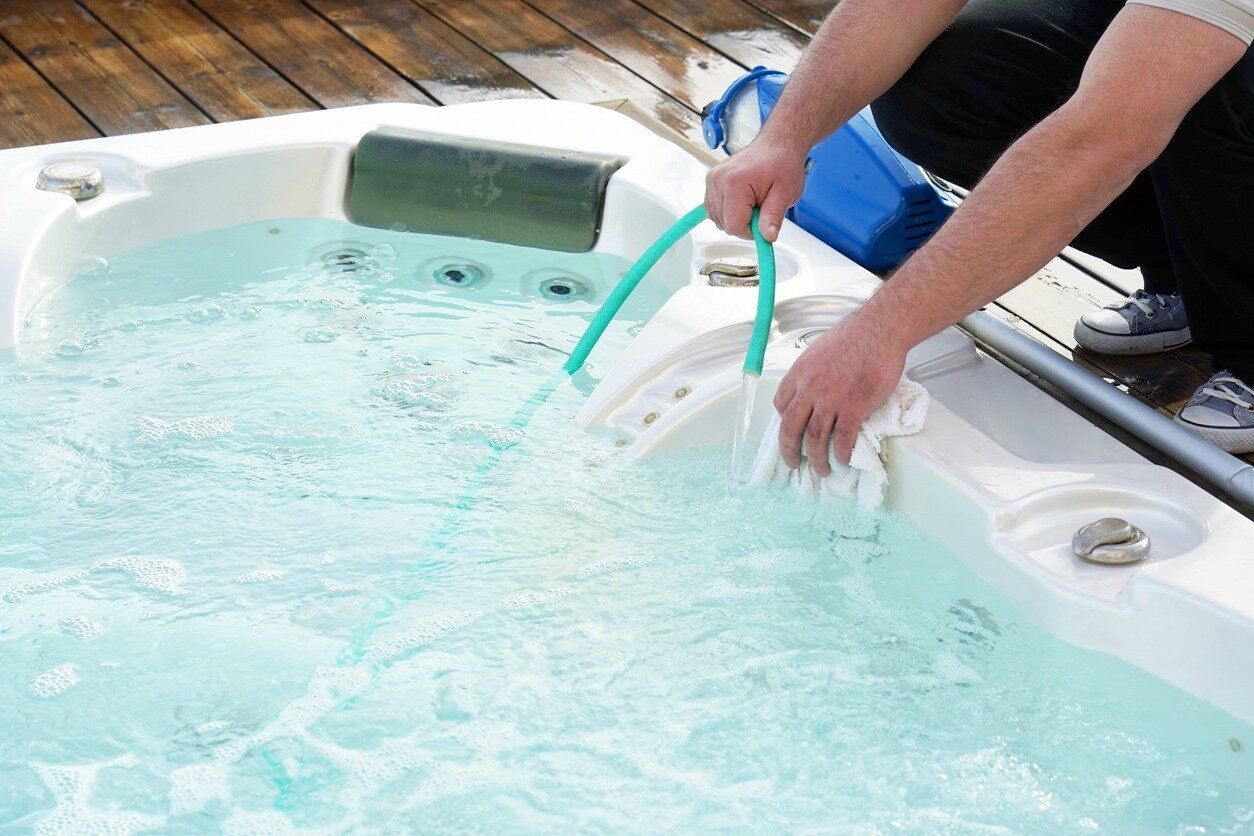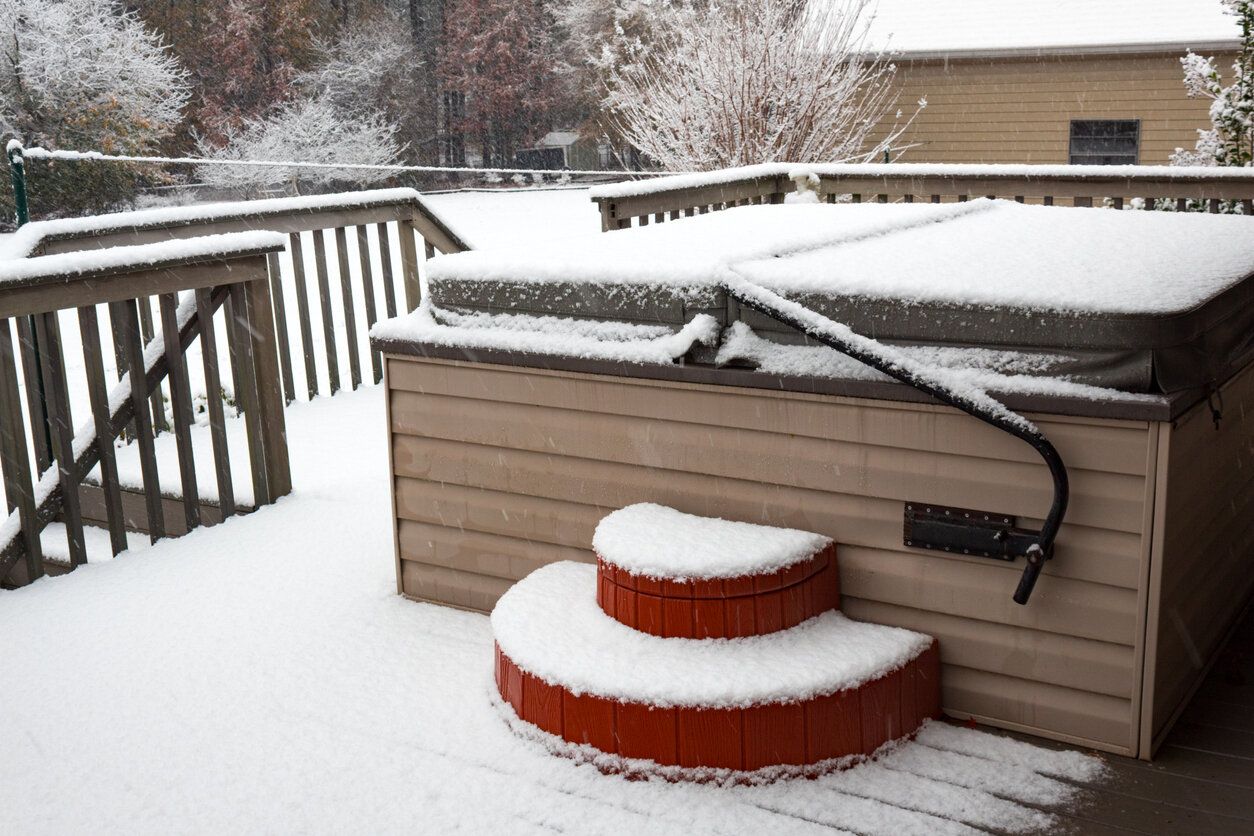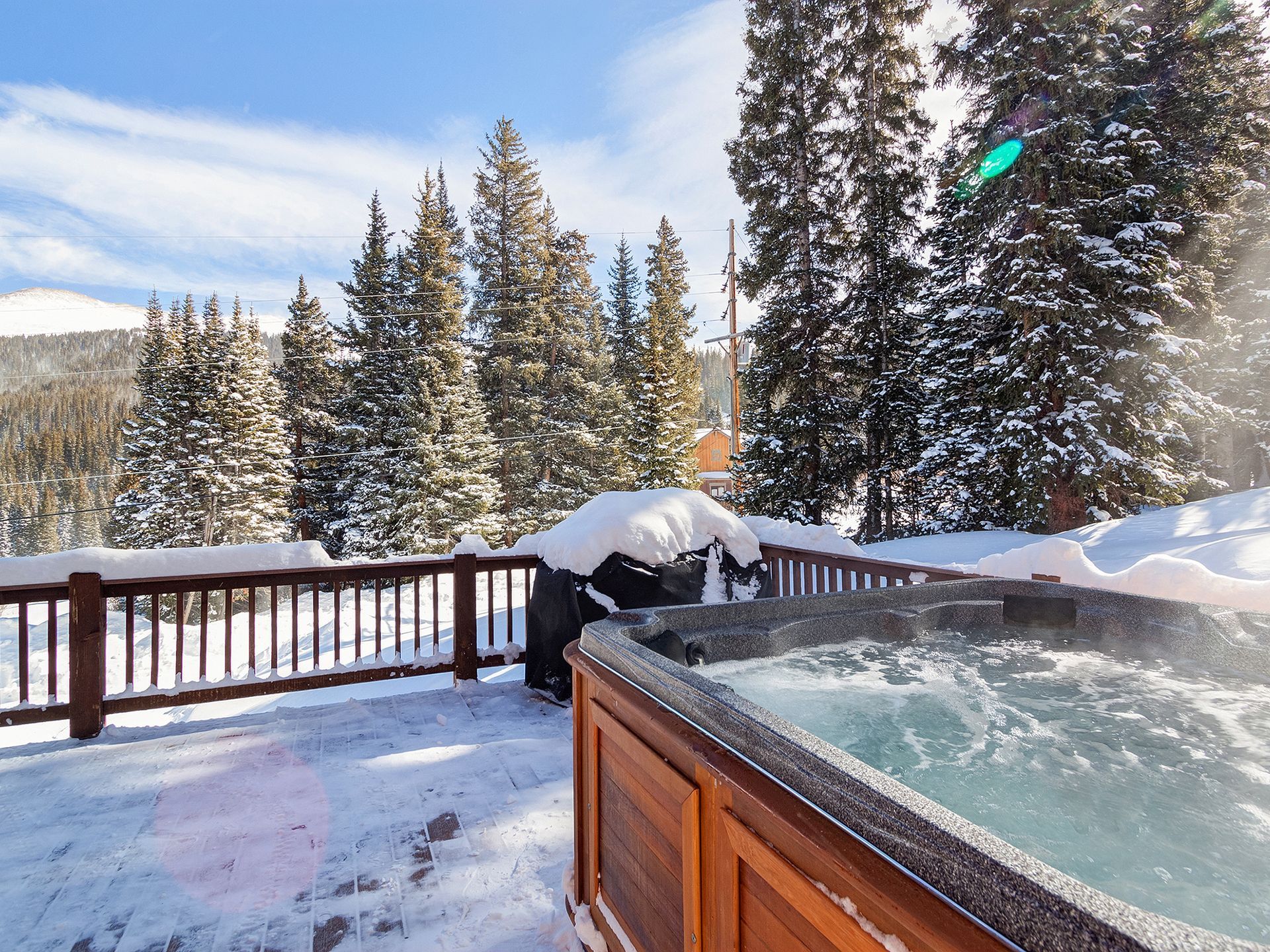How to Save on Hot Tub Energy Use
No doubt that in Summit County, we love our hot tubs. Our high alpine environment is the ideal place to enjoy the many benefits hot tubs offer. Guests love them too. Hot tubs are the most-requested amenity in a vacation rental home and often part of the vision in mountain vacation dreams. One of the only drawbacks to having a hot tub is the increase in energy use. But we are here to tell you numerous ways to decrease hot tub energy use and save money on your energy bill.
The variables are many, but on average, a hot tub will attribute to 10-20% of your overall energy bill. Factors will include how often the tub is used, the price of energy in a particular area, outdoor temperature, and the quality and maintenance of the hot tub equipment. Run down this list of energy-saving tips and see how many you can check off to get your hot tub energy use closer to the low end of 10%.
- A good hot tub cover: Think of the hot tub cover like the roof on your house. Imagine the enormous energy loss you would incur if your roof had giant leaks and gaps. Old, damaged, or worn out hot tub covers are the biggest source of heat loss. A good cover should fit properly, not too small nor too large. Over time, the cover will absorb moisture into the foam insulation. Saturated foam is useless as insulation. Be sure to check the cover hinge where most heat escapes. The hinge should be in good working condition with no damage. See
tips here on caring for your hot tub cover and extending its lifespan.
- Lower the thermostat: 104 is the standard hot tub temperature here in the high country. However, lowering the temp just 1-3 degrees can result in energy savings. If the tub will not be used for more than 7 days, it can be set in economy mode if the tub has that option. If the tub will be out of use for several months, the temperature can be turned down further, but in the winter should still not go lower than 72 degrees.
- Set up a wind block: If your tub sits out on a deck or yard away from walls, consider building a privacy fence, planting some trees, or even a dual purpose wall made from solar panels. Breckenridge in particular is prone to strong winds on occasion. Protecting your tub from these frosty winds can save on energy use.
- Set pumps and filtration cycles to run from 11pm to 7am during non-peak hours for energy use. Typical cycles last around 8 hours, but if your tub has the ability it can be set to run only 4 hours on days when the tub is not used. Of course, this will not work for many rental homes since the days the home is occupied can vary tremendously.
- Inspect the cabinet for leaks. Add extra insulation to the inside if possible. Summit Hot Tubs sells
Artesian Spas which are filled with insulating foam in the space between the cabinet and tub structure. This foam has the highest efficiency rating available for the best heat retention.
- If the hot tub is drained on a day when guests will be checking in, make sure the guests know that the tub takes approximately 8 hours to re-heat. If they are not aware, inevitably they will find the tub cool and turn the thermostat up even higher resulting in wasted energy use.
- Turn off all controls, lights, and water features upon exit of the tub. Jets are fun and add tremendous ambiance to tub use, but the air they push into the water can actually lower the temperature. For your guests, this is yet another time they will need education. A simple laminated list of guidelines on the door leading to the hot tub will help in this regard.
- Make sure all
hot tub equipment is functioning properly. This means filters need to be changed on a regular basis and a knowledgeable hot tub technician be inspecting the tub on a regular basis.
- Place a wind strap on the hot tub cover. A wind strap will prevent wind gusts from blowing the cover off and leaving the tub exposed to harsh elements making the heater work overtime.
- It may be too late now, but if you plan to purchase a new tub, try to place it to catch south-facing sun exposure and away from eaves that are prone to snow/ice runoff. Also place in a wind blocked area if possible.
- Remove snowfall from cover promptly.
- Try something fun like floating or tubside candles and leave the tub lights off.
- Replace bulbs with LED bulbs.
- For non-rental homes, a thermal blanket will help reduce evaporation and keep heat in. We don’t recommend them for rental homes as the guests are very unlikely to place the blankets back on and instead leave them in a heap on the ground next to the tub.
- Guest education: You would be surprised how many guests won’t even bother to replace the cover if you don’t ask them to. Many guests (especially from the south) have only seen commercial hot tubs which are very rarely if ever covered. They assume it’s okay to leave your cover off their entire stay and place it back on only upon their departure. Please provide your guests with some simple hot tub rules and guidelines- we have an example
here.
- Is it time for a new tub? Many newer models are much more energy efficient and have more options to set pump and filtration cycles to match use. Call us and ask to talk to our Summit Hot Tubs salesperson for information on a new-and-improved hot tub for your home today.
Our friendly technicians and staff are always available to answer your questions and help you get the most enjoyment from your hot tub. Please contact us for new service, repairs, or any hot tub questions.
